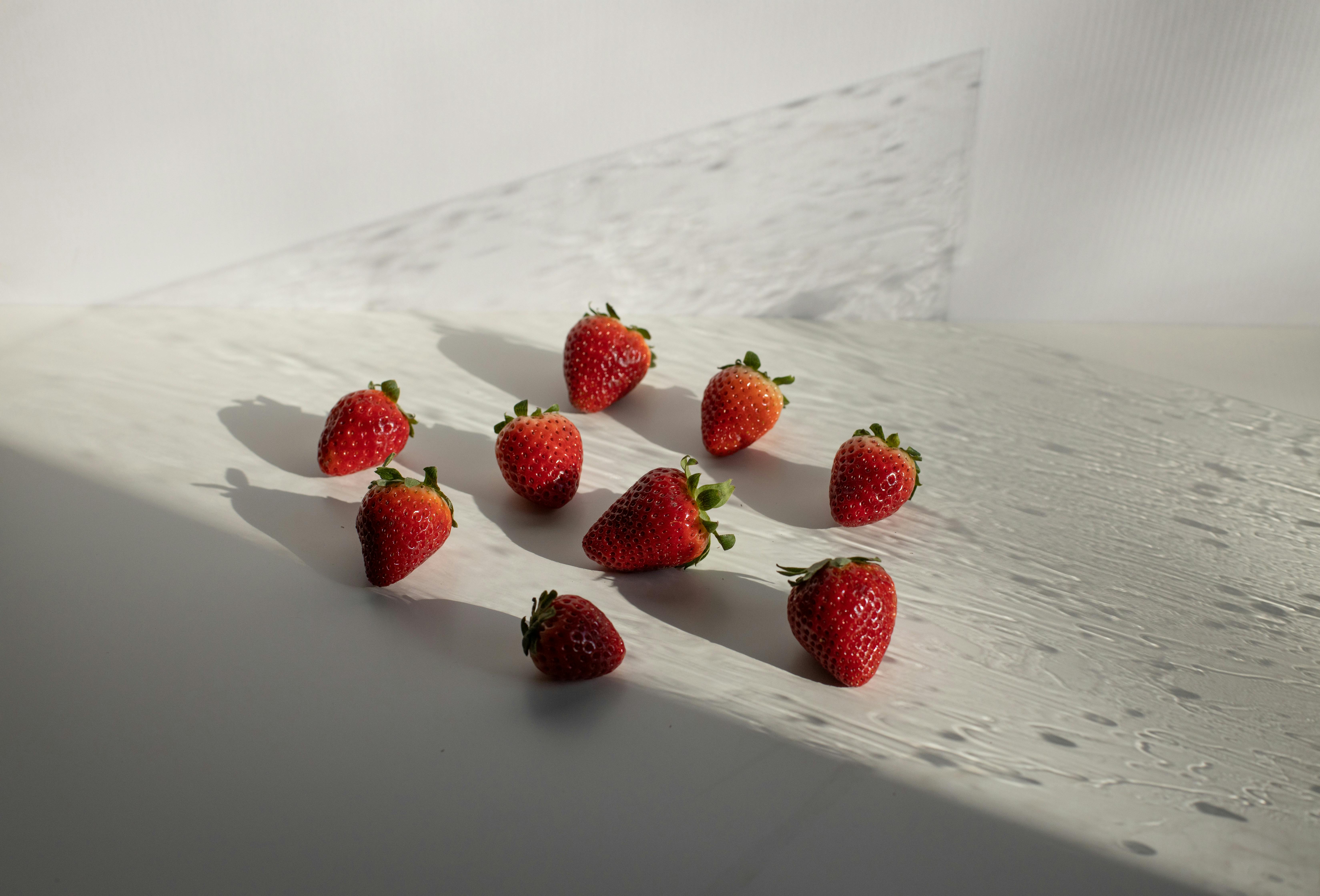If you have a strawberry plant that has suddenly stopped producing fruit or leaves, you may be wondering if it is dead or just dormant. While it can be difficult to tell the difference between a dead plant and one simply in a state of dormancy, there are some things you can look for to determine which it is. In this article, we’ll discuss the signs of a dead strawberry plant and how to tell if yours is just dormant.Signs of a dead strawberry plant include wilted leaves, yellowing leaves, lack of new blooms or fruit, and blackened foliage. If the plant is not receiving enough water, it can also become dry and brittle. If the soil around the plant is very dry or has a grayish-white coloration, this could be an indication that the roots are no longer functioning properly. Additionally, if the stalks and stems of the plant are brown and mushy, this is a sign that the plant has died.
How to Tell if Your Strawberry Plant is Dormant
Knowing when your strawberry plant is dormant can help you decide when to prune it and when to provide it with additional care. Dormant strawberry plants typically look like they are dead, but they are actually just in a state of rest. Here’s how to tell if your strawberry plant is dormant:
The first thing you should check for is whether the leaves on your plant are yellowish-green or brown. If the leaves on your strawberry plant have taken on a yellowish-green hue, then it could be a sign that the plant is in a state of dormancy and not dead. If the leaves are more brown than green, however, then it’s likely that the plant has died.
Another symptom of dormancy is that the buds on your strawberry plant will be closed and not actively growing. If you notice that new buds haven’t opened up in several weeks, then this could be an indication that your strawberry plants are resting for now.
Finally, check to see if there is any new growth on your strawberry plants. If there isn’t any new growth or if the existing growth looks weak and stunted, then this could mean that your plants are in a state of dormancy. You can also look for signs of new flower buds beginning to form; these usually form during late winter or early spring.
By keeping an eye out for these signs, you can easily determine whether or not your strawberry plants are dormant. In most cases, they’ll begin growing again soon enough!
Incorrect Planting
One of the most common reasons why your strawberry plant might be dead is incorrect planting. If you did not provide your strawberry plant with the right amount of sunlight or water, it may have died due to insufficient nutrients. Additionally, if you planted your strawberry plant in a soil that was too acidic or alkaline, it may not have been able to take up the necessary nutrients and may have died as a result.
Freezing Temperatures
Another reason why your strawberry plant might be dead is freezing temperatures. If your area has experienced a sudden cold snap or frost, it can damage or kill your strawberry plant if it is not properly protected. In this case, you may need to relocate the plants to an area where they are better protected from cold weather conditions.
Diseases and Pests
Another potential cause of death for your strawberry plant is diseases and pests. If your plant has been exposed to certain types of fungi or bacteria, it may have become infected and unable to survive. Additionally, certain pests such as aphids can also feed on the leaves and stems of strawberry plants, which can lead to their death if left unchecked.
Extreme Weather Conditions
Extreme weather conditions are another possible cause of death for your strawberry plant. If temperatures become too hot or too cold for extended periods of time, it can weaken the plants and make them vulnerable to disease and pests. Additionally, extreme wind or hail can damage the leaves and stems of the plants, leading to their death if left untreated.
Caring for a Dormant Strawberry Plant
Caring for a dormant strawberry plant is an important part of ensuring a successful harvest. During the dormant period, your strawberry plants will need regular watering, weeding and fertilizing to ensure they stay healthy. While it’s important to provide your plants with the necessary nutrients during this time, it’s also essential to avoid over-fertilizing or overwatering them. This can cause root rot and other issues that can affect the quality of your harvest.
It’s also important to prune your plants during dormancy. Pruning helps promote healthier growth in the spring by removing damaged or diseased foliage and encouraging new growth. Pruning also helps keep weeds from taking over and competing with your strawberry plants for nutrients. You should prune your plants when they are actively growing, as this is when they are most resilient to damage.
Weeding is also essential during dormancy as weeds can quickly take over and outcompete your strawberry plants for water and nutrients. Be sure to remove any weeds that appear in the winter months before they have a chance to establish themselves in the soil around your plants. Mulching is another great way to reduce weed growth during dormancy.
Finally, it’s important to monitor your strawberry plant’s health during its dormant period. Check regularly for signs of disease or pests such as aphids or slugs, which can ruin an otherwise healthy harvest. If you notice any problems, take appropriate action as soon as possible to prevent further damage.
By following these simple tips, you can ensure that your strawberry plant remains healthy during its dormancy period and will be ready for a successful harvest come springtime!
Rejuvenating a Dormant Strawberry Plant
It can be disheartening to see a beloved strawberry plant become dormant, but with the right tools and care, you can help bring it back to life. To rejuvenate a dormant strawberry plant, start by pruning off any dead or diseased leaves and stems. Then, fertilize the soil with an appropriate fertilizer for your type of strawberry plant. Additionally, water the soil regularly and make sure it remains evenly moist at all times. If your strawberry plant is in a container, check the drainage holes regularly to make sure they are not blocked. Lastly, apply mulch around the base of the plant to help retain moisture and keep weeds at bay. With proper care and attention, your dormant strawberry plant should soon start to show signs of life.

When Do Strawberry Plants Go Dormant?
Strawberry plants typically go dormant during the winter months. During this time, strawberry plants may lose their leaves and become less active. They will require much less water and fertilizer during this time, as they are in a period of dormancy. In most regions, strawberry plants will go dormant when temperatures begin to drop and the days become shorter. The amount of sunlight received by the plant will determine when it goes dormant, but generally it will be around late fall or early winter.
Once the plant has gone dormant, it is important to make sure that it is protected from extreme temperatures and has adequate drainage. Strawberries may not survive if they are exposed to extreme cold or heat for too long. It is important to ensure that the soil does not become waterlogged either as this can lead to rot or disease in the plant.
In areas with mild winters, strawberry plants may remain relatively active throughout the year and can produce fruit all year round. However, in colder climates, strawberry plants may take a few months off before they begin producing fruit again once springtime arrives and temperatures start to warm up again.
It is important to remember that during dormancy strawberry plants still need some care and attention in order to ensure a healthy harvest of fruit next year. Pruning should still be done during this time so that new growth can occur when temperatures become more conducive for growth again in springtime. Planting companion flowers in order to attract pollinators can also help ensure a healthy harvest of strawberries next year as well.
Reviving a Dead Strawberry Plant
Strawberries are a delicious, sweet, and versatile fruit that can be used in many recipes. However, if you’re growing them in your garden or in containers, they can be tricky to keep alive. If your strawberry plant has died, there are some steps you can take to revive it.
Check the Soil
The first step is to check the soil for moisture levels and nutrient content. If the soil is too dry, it may need to be watered more often or supplemented with fertilizer. You can also use a soil test kit to determine if the soil is lacking any essential nutrients.
Prune Away Dead Leaves and Stems
Once you’ve checked the soil, you should prune away any dead leaves and stems from the strawberry plant. This will help stimulate new growth and help the plant recover from its dormant period. Be sure to use sharp pruning shears when trimming away dead material.
Choose Appropriate Location
It’s important to choose an appropriate location for your strawberry plant when re-planting it. Strawberries prefer well-drained soil with plenty of sunlight throughout the day. If possible, try to find a spot where temperatures remain consistently cool throughout summer months as strawberries don’t tolerate extreme heat very well.
Fertilize Regularly
Regular fertilization is essential for keeping your strawberry plants healthy and strong. Choose a fertilizer that is specifically formulated for strawberries and follow package instructions for application rates and frequency of use. Adding compost or mulch around plants can also help improve soil quality over time.
Provide Adequate Watering
Make sure to provide adequate watering for your strawberry plants throughout their growing season; too little water can cause them to become stressed and vulnerable to disease or pests, while too much water can cause root rot or fungal diseases like powdery mildew. Check soil regularly by sticking your finger into it about 2 inches deep; if it feels dry then it’s time to water again!
Strawberry Plant Death
The death of a strawberry plant can be caused by many things. The most common cause is poor soil conditions, but other environmental factors like temperature, humidity, and pests can contribute as well. Poor soil drainage can cause root rot, which will lead to the death of a strawberry plant. If the soil is too wet or too dry, it will not be able to absorb enough nutrients and water to sustain the plant. Additionally, if temperatures are too hot or too cold for a long period of time, it can also lead to the death of a strawberry plant. Humidity levels should also be monitored as high humidity can cause fungal diseases like powdery mildew or gray mold that can lead to plant death. Lastly, pests such as aphids, slugs and snails, spider mites and grasshoppers can all damage the foliage and fruit of a strawberry plant leading to its demise.
It is important to remember that different varieties of strawberry plants have different needs when it comes to light and water requirements. Therefore, when selecting a variety for your garden you should research its specific needs in order to ensure its success in your particular climate and environment. With proper care and attention you should be able to keep your strawberry plants healthy and thriving for many years.

Conclusion
Strawberry plants are both resilient and delicate, and understanding the difference between dead and dormant plants is important for taking the necessary steps to ensure healthy growth. Some of the key indicators to watch out for when determining whether your strawberry plant is dead or dormant are the presence of green leaves, new growth, and viable roots. Taking the time to inspect your plant in these different areas can help you identify if there is still potential for it to revive or if it has truly passed away. While this can be a difficult task, in the end it will be worth it for a healthier garden.
In general, if your strawberry plant appears to have died off completely then it is best to start fresh with a new one. On the other hand, if you believe that it may just be dormant, then there are several steps that you can take such as pruning back dead growth and ensuring proper soil drainage in order to give your plant a fighting chance at reviving itself. In any case, keeping informed about how best to care for your strawberry plants will help ensure their long-term health.



